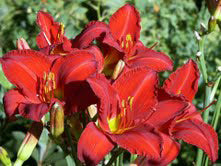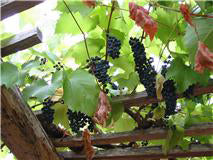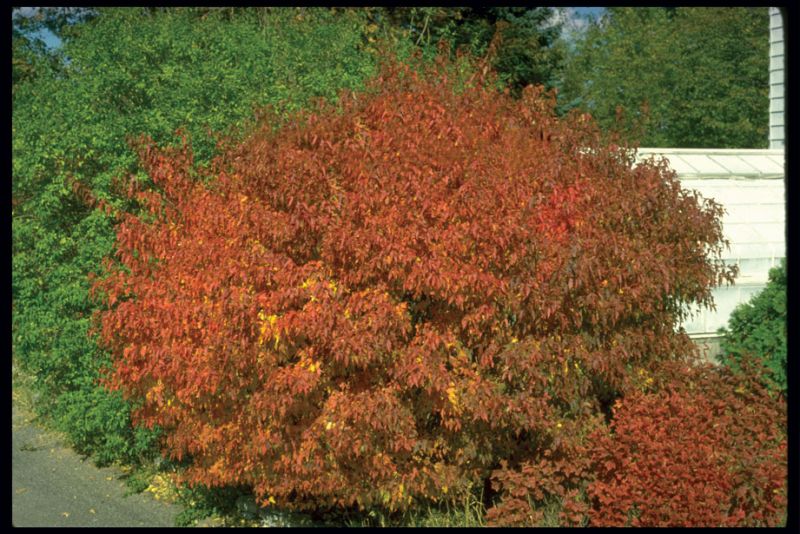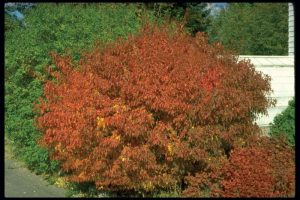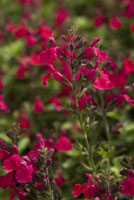 Before getting into the horrible details of death and decay in local gardens this week, I’ll begin with a positive accent: the Heatwave Sparkle Sage. It’s a garden plant that rarely is highlighted in gardening publications, bears hot pink flowers that really do sparkle, and is an instant favorite with hummingbirds. This super hardy plant with the ability to survive the cold damp winters in the mountains of Arizona makes it a ready choice for local gardens. A compact size, extremely low water demands, and blooms from early spring through late fall, all make it a must for local landscapes in need of more summer sparkle. The local crop of this dependable perennial is showing bold colors and at under $15 per plant is an excellent value.
Before getting into the horrible details of death and decay in local gardens this week, I’ll begin with a positive accent: the Heatwave Sparkle Sage. It’s a garden plant that rarely is highlighted in gardening publications, bears hot pink flowers that really do sparkle, and is an instant favorite with hummingbirds. This super hardy plant with the ability to survive the cold damp winters in the mountains of Arizona makes it a ready choice for local gardens. A compact size, extremely low water demands, and blooms from early spring through late fall, all make it a must for local landscapes in need of more summer sparkle. The local crop of this dependable perennial is showing bold colors and at under $15 per plant is an excellent value.
~~ ~~ ~~ ~~ ~~ ~~ ~~
Now, on to the troubles plaguing local gardens. Notice the humidity is off the charts? Oh, yeah, the mountain monsoon season is in full swing. Increased monsoonal humidity plus afternoon rain signals one of our best times to plant. Warm soils, afternoon rains, and heavy humidity all increase a gardener’s success rate, but care must be taken not to overwater. But, overwatering happens so we have experienced an epidemic of drowned plants being brought to the garden center. This is especially so from areas with hard clay soils that have difficulty with water perk.
Here’s the problem: Watering schedules were increased to get plants through the dry heat of June and early July, but on these irrigation programs plants now are drowning. The soil is not draining fast enough with all the water from irrigation systems along with what nature has been so kind to douse on our region. So, cut back on the water! Personally, I just cut the water to my backyard flowers by 42%. I will monitor the gardens closely over the next two weeks, but it looks like nature will more than subsidize any reduction in irrigation.
I also increased the number of days between watering my trees, shrubs, and vines. With a new vineyard and bramble patch added to my gardens, irrigation was set to cycle every 4 days. Since the monsoon hit, I changed drip irrigation to cycle every 6 days. This not only reduces my monthly water bill, but also caters to overall plant health. Each garden is different so there is no watering cycle to fit all landscapes. Just keep n mind that it really is critical to monitor watering of plants growing in mountain landscapes. Plants DO NOT like to sit in wet soggy soil.
Landscapes with many new plantings should be watered twice a week. For best health and optimum growth plants must breathe between water cycles. In landscapes with a mixture of established and new plantings, automated irrigation can supply one of the water cycles, monsoon rains can provide the second watering, and ‘newbies’ can be watered by hand as needed.
Stop in at the garden center and ask for a local watering guide. This professional chart shows how much and how often to water; it also charts seasonal adjustments. Let’s save as many plants as possible while saving on our water bills.
~~ ~~ ~~ ~~ ~~ ~~ ~~
This is the season when all that fertilizer we put down in spring reflects in how our plants look and bloom. However, without a summer feeding plants will not continue to perform well. It really is important to feed mountain plants at the beginning of the monsoon season. I blended an all-natural food perfect for summer landscapes. “All Purpose Plant Food” is an excellent granular plant food that works with our mountain environment. Because of the organic nature of this special blend there is no risk of burnt plant foliage or the fear of over fertilizing.
~~ ~~ ~~ ~~ ~~ ~~ ~~
Garden Alert! Aphids have taken over many gardens. Never have our mountain gardens been inundated by so many of these havoc-wreaking insects. Telltale signs of aphid invasion are wet foliage, glossy ground beneath an infested plant, flowers that once were beautiful but now refuse to bloom, and black ants crawling all over a plant. These are sure signs that a garden has aphids. (Remember that ants reduce the flower count on edibles thereby reducing the harvest.)
I’ve found aphids not only on my petunias and pentas, but also sucking the life out of my squash, cucumber, kale, and collard plants. My usual weapon of choice on my edibles is “Home Harvest Insect Spray”. This all-natural spray is effective if applied directly on the aphids and can be used up to the day of harvest without worry of harmful chemical residues.
Unfortunately, the aphid problem is so bad in my garden this year that I’ve resorted to “Multi-Purpose Insect Spray”, a harsher anti-aphid defense. The spray’s main ingredient, permethrin, is especially lethal to aphids, but it also takes out spiders, scorpions, ants, and grasshoppers. This killer is not organic, so additional care is necessary when using it.![multipurp[1]](https://wattersgardencenter.com/wp-content/uploads/2012/11/multipurp1-187x300.jpg)
Aphid-fighting tip – Aphids are allergic to the sun so they hang out at a plant’s base and underneath its leaves. Consequently, no matter the insecticide used, your time and energy are wasted if the top of the plant is sprayed. Focus spraying to the base of the infested plant and to the under side of its leaves.
Until next week, I’ll see you in the garden center.

